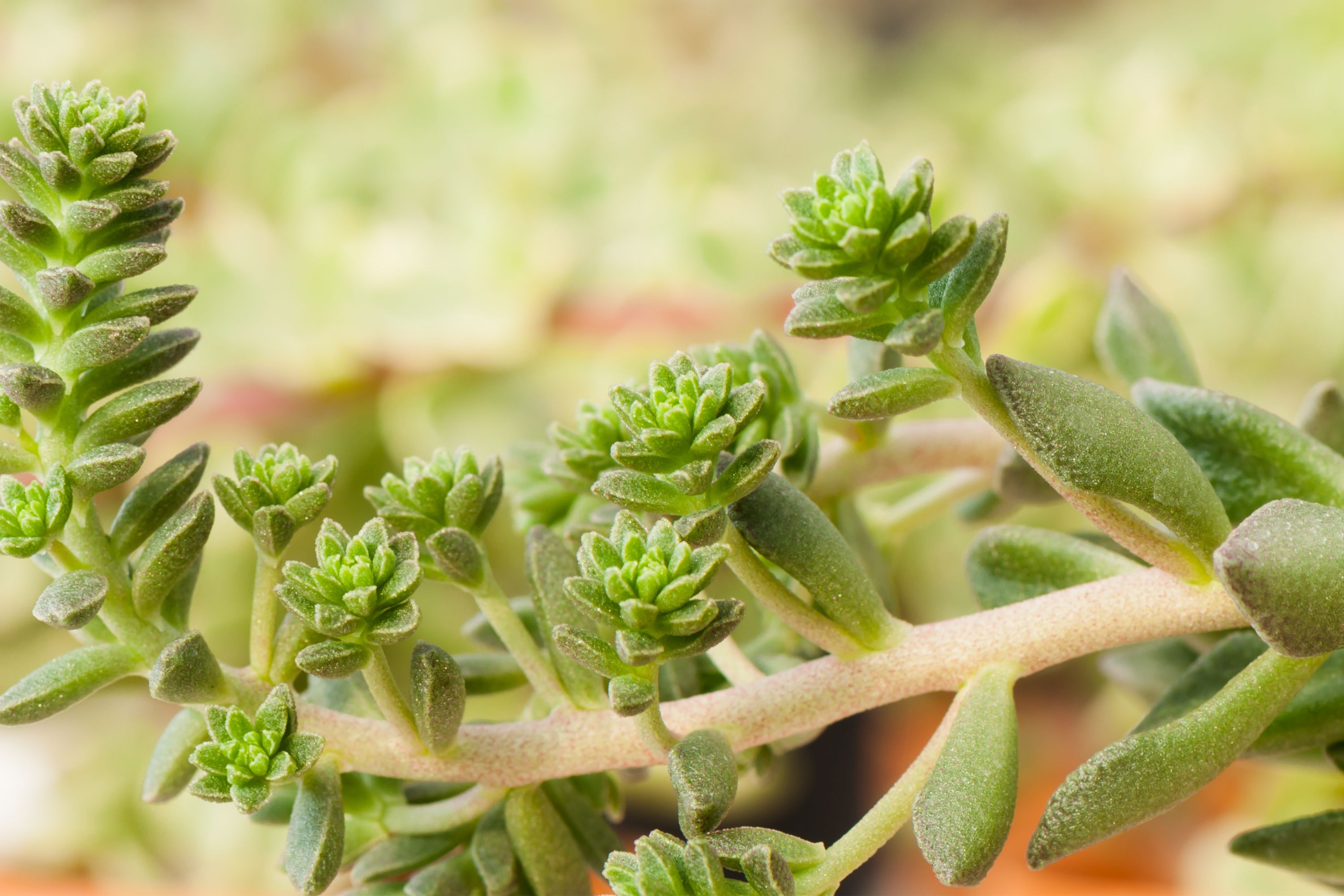Burro's-tail
(Sedum morganianum)

Description
Sedum morganianum, commonly known as burro's tail or donkey's tail, is a trailing succulent plant belonging to the family Crassulaceae. This plant is native to the mountainous regions of southern Mexico and is widely grown as a houseplant due to its attractive appearance and ease of care. Description Burro's tail is a trailing succulent plant that can grow up to 3 feet (90 cm) long. The stems are slender and pendulous, covered with fleshy, blue-green leaves that grow up to 1 inch (2.5 cm) long. The leaves are oblong and tapering, with a powdery coating of epicuticular wax that helps to reduce water loss through transpiration. The plant produces small, star-shaped flowers that are pink or red in color and bloom in the late summer or early fall. The flowers are clustered at the tips of the stems and are held above the foliage on thin, upright stalks. Cultivation Burro's tail is an easy-to-grow plant that is well-suited to indoor cultivation. It prefers bright, indirect light and well-draining soil that is allowed to dry out between waterings. Overwatering can lead to root rot, so it is important to let the soil dry out completely before watering again. This plant is also tolerant of a wide range of temperatures, making it an ideal choice for indoor environments. It can tolerate temperatures as low as 50°F (10°C) and as high as 90°F (32°C). Propagation Burro's tail can be easily propagated from stem cuttings. Simply snip off a stem that is at least 3 inches (7.5 cm) long and remove the bottom few leaves. Let the cut end dry out for a day or two before planting it in well-draining soil. Water sparingly until the cutting has rooted and is producing new growth. Pests and Diseases Burro's tail is relatively pest and disease-free, but it can be susceptible to mealybugs, scale insects, and spider mites. These pests can be controlled with insecticidal soap or by wiping the leaves down with a damp cloth. If the plant is overwatered or grown in soil that is too dense and poorly draining, it can be susceptible to root rot. Signs of root rot include yellowing or wilting leaves and a foul odor coming from the soil. If root rot is suspected, the plant should be removed from the soil, the affected roots should be trimmed away, and the plant should be repotted in fresh soil. Uses Burro's tail is a popular houseplant due to its attractive appearance and ease of care. It is often grown in hanging baskets or trained to grow up a trellis or wall. In its native habitat, the plant is used in traditional medicine to treat a variety of ailments, including stomach pain, fever, and rheumatism. Conclusion Sedum morganianum, also known as burro's tail or donkey's tail, is a beautiful trailing succulent plant that is easy to grow and care for. With its slender, pendulous stems covered in fleshy, blue-green leaves, it is a popular choice for indoor cultivation. Whether grown in a hanging basket or trained to climb a trellis, this plant is sure to add a touch of natural beauty to any indoor space.
Taxonomic tree:







